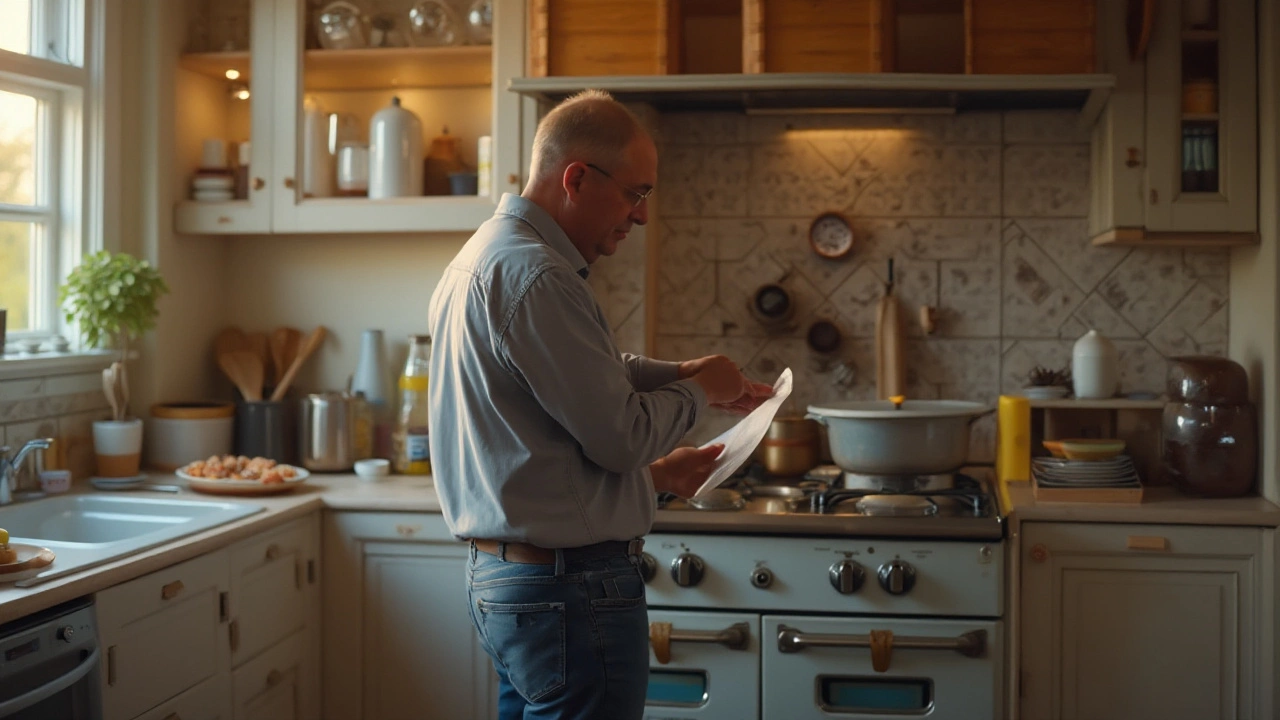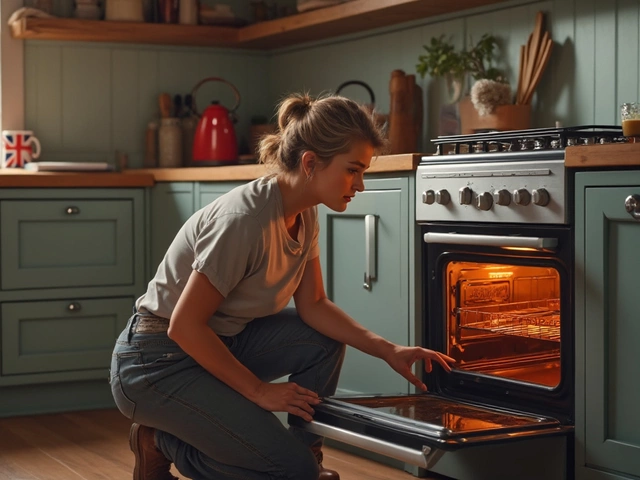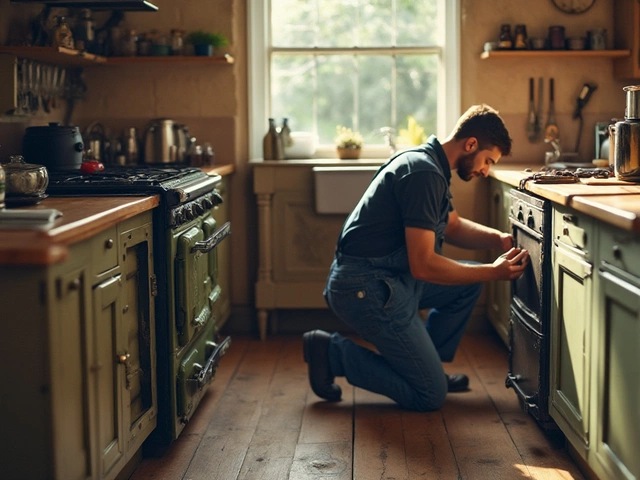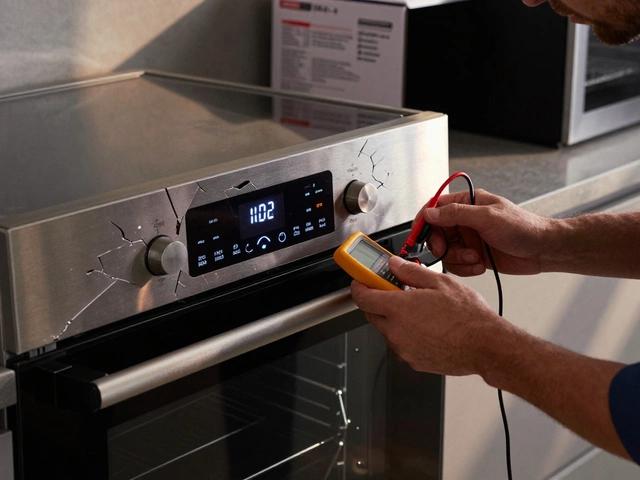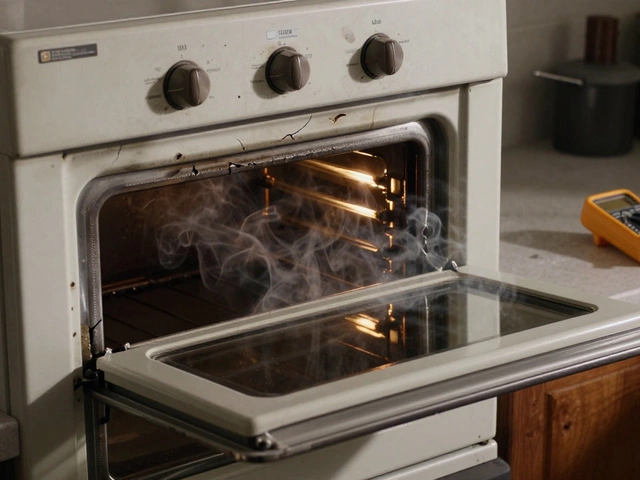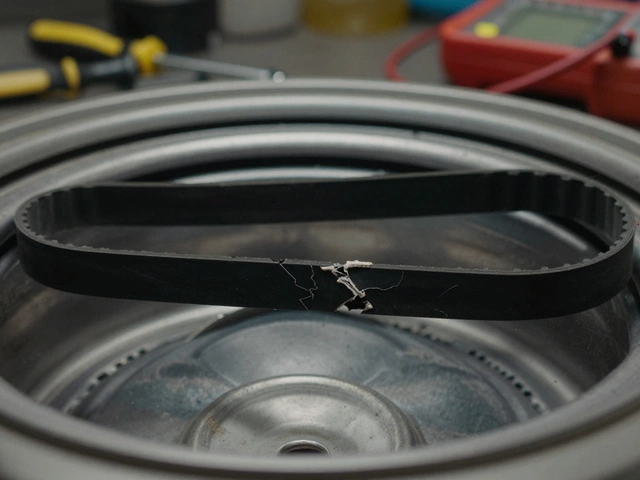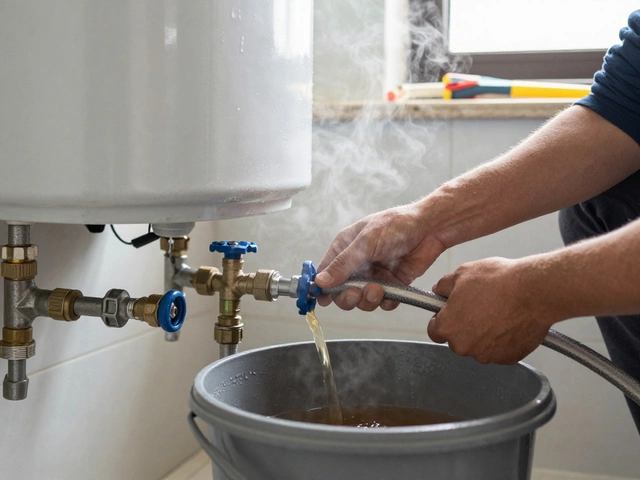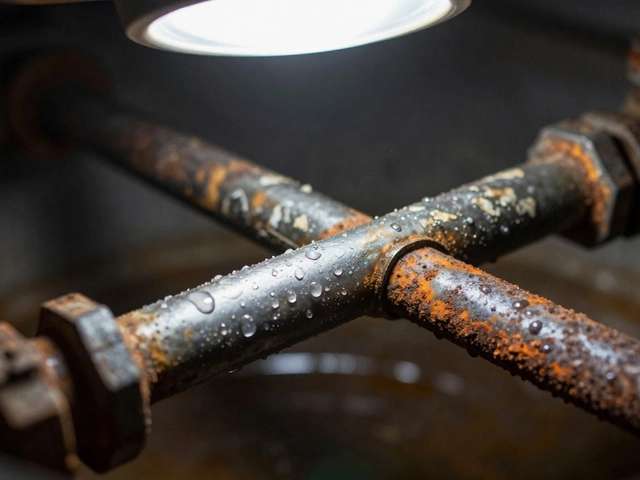When your trusty 7-year-old oven starts acting up, it's only natural to wonder whether it's worth the time and money to get it fixed. With technology advancing and energy efficiency becoming more important, deciding whether to mend or replace can be a head-scratcher. Your kitchen's central appliance might still have some life left in it—or maybe it's time for an upgrade.
This article will take you through the key factors to think about when facing oven trouble. From repair costs to energy savings, and even the environment, we'll cover it all. So before you make a decision, take a moment to weigh up these aspects and tips to keep your culinary buddy cooking smoothly.
- Understanding Repair Costs
- Evaluating Performance and Age
- Energy Efficiency Considerations
- Signs Your Oven is Beyond Repair
- Environmental Impact of Replacement
- Tips for Oven Maintenance
Understanding Repair Costs
When it comes to tackling the cost of oven repair, it's essential to break down the different factors that contribute to the final bill. Repair costs can vary widely depending on the type of repair needed, the model of your oven, and even the technician you hire. One common starting point for calculating potential repair costs is to consider the specific issue your oven is experiencing. For instance, a malfunctioning heating element or a broken thermostat might involve different levels of complexity and, thus, different repair charges.
Typically, simple repairs like replacing a blown fuse or a damaged gasket might range from $50 to $150 depending on parts and labor. On the other hand, complex repairs like fixing the control board can easily climb upwards of $200. It's crucial to assess the extent of the damage accurately, as sometimes, what seems like a small issue could have more extensive underlying problems that need addressing. Several appliance repair services offer a diagnostic fee—usually around $50 to $100—which is often applied to the total repair cost if you decide to go forward with the service.
It's also wise to compare the repair costs to the price of a new kitchen appliance. For a 7-year-old oven, if the repair costs exceed 50% of the price of a new model, it might be time to consider a replacement. In fact, an article from Consumer Reports advises,
"If an appliance is more than halfway through its life span and the repair will cost more than half the price of a new product, consider buying new."This does highlight the need to balance both the financial and emotional attachments to your appliance.
Besides the monetary aspects, also think about the inconvenience and downtime involved in getting your oven repaired. Depending on the availability of parts and technicians, repairs could take days or even weeks. This might impact your household significantly, especially if you rely heavily on your oven for daily meals. For some, the expedited turnaround on a new order and the assurance of a warranty might outweigh the repair route. However, for others who prefer maintaining their trusty appliances, fixing might seem like a suitable choice. Either way, weighing the full spectrum of costs and impacts is crucial before making a decision.
Evaluating Performance and Age
Your oven's performance and age are two key factors to think about when deciding between repairs or a new purchase. Time has a way of sneaking up on appliances, and a 7-year-old oven is no spring chicken. But age alone shouldn't be the sole determining factor. It's more about how the oven performs right now. Ask yourself: Does it heat evenly? Is it taking longer to cook meals? And, perhaps most importantly, has it become unreliable? These are signals that warrant attention.
A significant performance drop in your trusty kitchen companion can be both frustrating and costly if it leads to undercooked or burnt meals. Often, issues like uneven heating or extended preheat times suggest that components such as the oven repair thermostat, heating elements, or seals might need replacement. Investing in these fixes might reinvigorate your appliance, sparing you unnecessary expenses.
While considering repairs, remember that fixing issues while the oven is relatively young could extend its life and save you from early replacement costs. Now, let's talk about how ovens age. Electrical and mechanical components degrade, affecting their efficiency and functionality. Yet, not all ovens age equally; variables like frequency of use, maintenance habits, and initial build quality play a huge role.
Consumer Reports states, "Regular maintenance helps keep your appliances running efficiently and can extend their lives by several years." Keeping up with timely upkeep can indeed stave off wear and tear, and maintain your oven's performance within reasonable standards.
From a statistics standpoint, it is worth mentioning how the lifespan of appliances generally averages about 15 years. If you purchased a mid-range to high-end model, the 7-year mark flags the halfway point of its expected lifespan. Such models often have better longevity thanks to superior build materials and technology, which might justify a repair rather than replacement.
If energy efficiency became a noteworthy concern, considering whether modern ovens with improved energy ratings offer sufficient savings to justify replacement costs is vital. By bridging the efficiency gap, significant electricity consumption reductions may translate into long-term savings, making an upgrade more appealing. However, if your current oven is still adequately efficient and matches up comfortably with recent models, repairs can be a more sensible route.
Putting your and your wallet's minds at ease often means weighing up these elements, and if your beloved oven still performs admirably enough, a little tender loving care might be all it truly needs to keep serving your household meals for years to come.
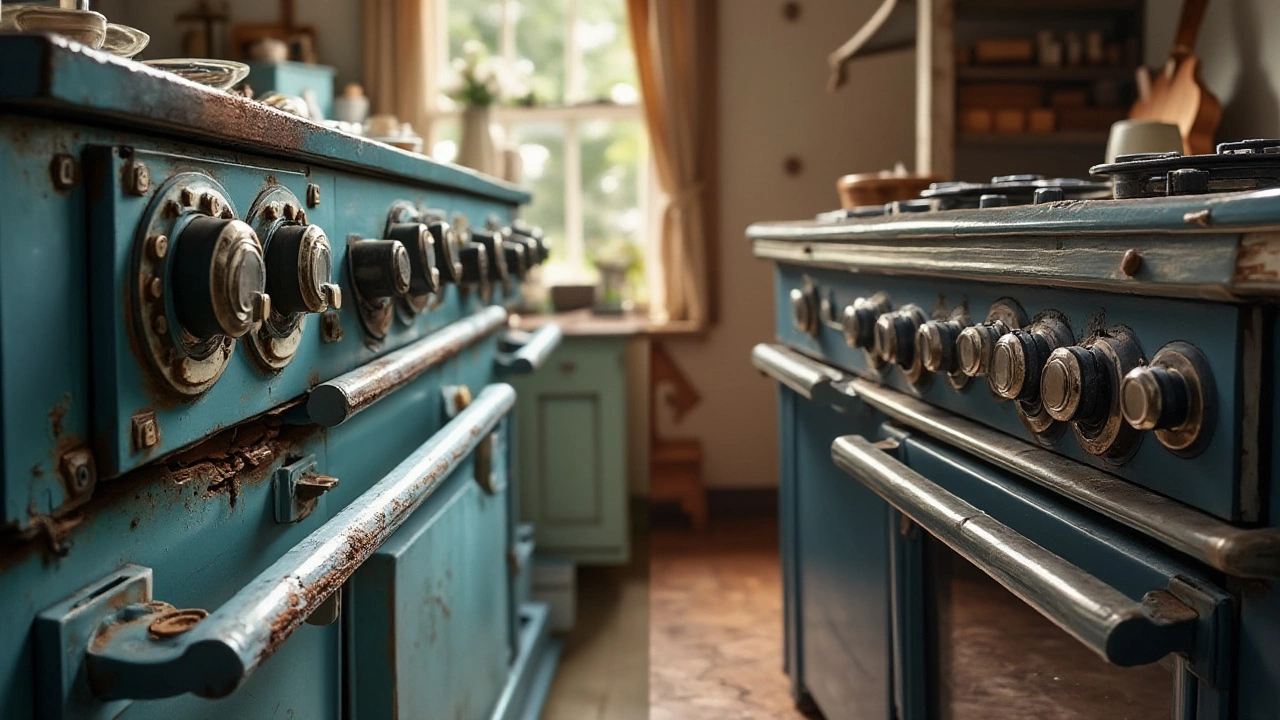
Energy Efficiency Considerations
When contemplating whether to repair your 7-year-old oven, energy efficiency is a pivotal factor. With advancements in technology, modern ovens tend to consume far less energy than their predecessors. This could lead not only to reduced utility bills but also to a smaller carbon footprint. A significant portion of an oven's energy usage is centered around maintaining a consistent temperature, which older models may struggle with due to wear and inefficiencies. Today's models often come equipped with convection settings and precise temperature controls that promote even cooking while conserving energy.
Home appliances, including ovens, are now available with ENERGY STAR ratings, which provide a great benchmark to evaluate their efficiency compared to older models. For instance, an ENERGY STAR certified oven can be up to 20% more efficient than a standard oven sold just a few years ago. This improvement can translate into substantial energy savings over the appliance's life, a compelling reason to consider an upgrade. However, if your 7-year-old appliance was at the forefront of energy-saving technology when purchased and is still performing well, a repair might make perfect financial sense.
It's essential to weigh the energy savings from a modern oven against the repair costs associated with maintaining your current one. Ask yourself how much energy your current oven is consuming and whether it's significantly impacting your energy bills. You can find this information in your annual energy report provided by your utility company. If there's a stark difference between your kitchen's energy consumption and that of other similarly sized homes, it might be the right time to consider an upgrade.
According to the U.S. Department of Energy, kitchen appliances account for up to 9% of your home’s total electricity consumption. Reducing this fraction can lead to substantial savings over time.
Moreover, consider the environmental impact. Appliances that guzzle more energy contribute more significantly to greenhouse gas emissions. By choosing an energy-efficient oven, you actively participate in reducing your home's carbon emissions. Still, it's worth noting that discarding a perfectly repairable appliance could add to landfill waste. This dilemma—balancing reduced energy usage against increased waste—is an important one for environmentally conscious homeowners.
Another factor is the technological innovations in modern ovens, like smart controls, that allow for better scheduling and remote monitoring to optimize energy use. These features help in trimming down energy consumption during peak hours. However, finding a balance between the fancy features of a new oven and the cost-effectiveness of repairing your existing unit is crucial. Always do the math to avoid unnecessary financial strain. If your budget allows and the calculations favor an upgrade, opting for a new unit might be the path forward for your home.
Signs Your Oven is Beyond Repair
Whether you're a seasoned cook or someone who enjoys the occasional homemade meal, the oven plays a crucial role in your kitchen ecosystem. Though fixing it might seem like a feasible option initially, there are telltale signs that your trusty appliance could be beyond saving. One of the most apparent indicators is when repairs become more frequent and costly. If you've had to call the repair service several times within a short period, each visit taking a chunk out of your wallet, it might be time to think about replacement. Repair bills can often add up quickly, sometimes approaching the price of a brand-new, energy-efficient model.
The National Kitchen & Bath Association notes, "Modern appliances are not just about high performance but also long-term sustainability."Understanding this perspective can help you see why sinking money into repeated fixes might not be the wisest choice.
Another major red flag showing that oven repair is no longer feasible is when your appliance begins to underperform despite being fixed repeatedly. An erratic temperature, for example, can mean that the control board is failing. It's not just an inconvenience but a sign of internal issues that are often expensive to remedy. An oven that takes forever to preheat or provides inconsistent baking results can alter your cooking experience drastically. You can find yourself spending more time and effort to achieve desired results, which eventually leads to growing frustration and wasted resources. A brand-new home appliance might be a better investment in this kind of scenario, saving you money in the long run by preventing high energy consumption and poor efficacy.
Sometimes, an oven might be plagued with persistent safety issues, such as constant sparking in electric models or frequent gas leaks in gas ovens. If your oven exhibits these dangerous quirks and the fixes don't hold, it's crucial to consider the safety of your home and family above repair costs. Continuous safety problems pose a risk that's too great to ignore or delay in addressing. Additionally, excessive energy consumption and skyrocketing utility bills might also suggest that the old oven is draining more power than it should, which could be due to aging or faulty components. Replacing your unit with a more energy-efficient model can lead to substantial savings on energy costs over time, apart from being environmentally friendly.
When the prevalent issues with your oven aren't just limited to performance or safety but extend to physical aspects, this could also be a deal-breaker. For instance, if you notice extensive rusting or severe structural damage, it typically means the appliance has reached the end of its useful life. The structural integrity of an oven is vital to its safe and efficient operation, and such damage can pose both a functional disability and potential hazard. Consider also the obsolescence of your appliance's parts. If finding replacement parts becomes cumbersome, with some perhaps no longer in production, then it signals that replacing the entire unit might be more sensible than splurging on rare, hard-to-find components and their associated high costs.
Ultimately, assessing whether appliance maintenance is worth pursuing or if replacing it altogether would be a better option is a multifaceted decision. While adapting to inevitable wear and tear is part of appliance ownership, recognizing when to let go can be equally significant. It's about understanding, valuing, and calculating the overall expenses, safety implications, and time investment you're willing to trade for convenience and improved performance. An informed decision based on these considerations ensures that your kitchen remains the heart of the home, equipped and ready to handle anything from weekday dinners to gourmet feasts.

Environmental Impact of Replacement
When it comes to replacing a 7-year-old oven, understanding the environmental impact is crucial. Think of all the materials involved in making an oven: steel for the body, glass for the door, various metals for the wiring and heating elements, and sometimes, harmful substances like lead or cadmium. The production and transportation of these materials to the manufacturing plant contribute significantly to greenhouse gas emissions. Interestingly, the UN Environment Programme notes that globally, electronics, including appliances like ovens, account for about 2% of emissions, which is akin to the aviation industry. Throwing away an old appliance takes a toll not just on your wallet, but on the Earth too.
Disposing of an older oven is not without challenges either. While many parts can be recycled, there’s a substantial amount that may end up in landfills, potentially leaching toxins into the soil and water. This environmental hazard is a major concern, especially considering that only about 20% of e-waste is formally recycled. An alternative is to repair and extend the life of your current appliance, which conserves resources and lessens the demand for new materials. According to a study by the European Environment Agency, extending the lifespan of electronics and appliances by just one year can reduce e-waste production by 5–7 million tonnes each year across Europe.
"Buying less, demanding better quality and taking care of what we already own protects the environment and can even improve our quality of life," says Markus Zils, a researcher at the CE Academy.
Another angle to consider is energy efficiency. While older models might not be as efficient as the latest ones, maintaining your current oven with regular servicing can still minimize its energy footprint. Upgraded technologies in newer models do offer advantages, but the environmental cost of manufacture and disposal should balance out against the benefits of marginally reduced energy use. If deciding on getting a new oven, look for models with Energy Star ratings or similar certifications indicating they meet stringent efficiency standards.
The decision to repair instead of replace often aligns with sustainable practices advocated globally. The
Tips for Oven Maintenance
Keeping your oven in tip-top shape can extend its life significantly and ensure that your meals are cooked evenly every time. Regular maintenance, believe it or not, can save you quite a bit of money in the long run by preventing the need for complex oven repair. Let’s delve into some essential tips that can help you maintain your oven’s performance.
First and foremost, make cleaning your oven a regular habit. The residue from spills and splatters can accumulate over time, leading to unpleasant odors and even smoke. It's crucial to clean the interiors using a gentle wipe or a specialized oven cleaner. Harsh abrasives and metal scrapers should be avoided to prevent scratching the surfaces. Keep the oven door glass clear, so you can see inside without opening it frequently, which helps in maintaining temperature accuracy.
Always be vigilant about the condition of your oven’s seals and gaskets. These play a pivotal role in trapping heat inside the oven, ensuring efficient operation. If you notice your kitchen getting warmer when the oven is on, it might indicate worn seals that require prompt attention. Also, regularly check the heating elements for any signs of corrosion or breakage and ensure the temperature sensor is functioning correctly.
“An ounce of prevention is worth a pound of cure. Regular checks can prevent costly damage,” says Chef Jamie Oliver, emphasising the importance of appliance care.
Another smart practice is to ensure your oven remains plugged on a stabilized power source, protecting it from voltage fluctuations that can cause serious damage. Combining this with the judicious use of self-cleaning features (if your model supports it) will further keep your oven in immaculate condition. However, refrain from using this feature too often as the extremely high temperatures can wear out components over time.
Remember to occasionally test the oven’s performance with a simple loaf of bread or a cake to ensure it’s heating evenly. This little test can help point out hot spots or temperature fluctuations that might otherwise go unnoticed. Additionally, ensuring the oven is on a firm, level surface will prevent any tilting-related cooking issues and unnecessary strains on the appliance structure.
| Maintenance Task | Frequency |
|---|---|
| Interior Cleaning | Monthly |
| Seal/Gasket Check | Quarterly |
| Performance Test | Biannually |
By following these straightforward yet effective tips, you not only prolong the life of your appliance but also keep it running efficiently, which is kind to your energy bills. In an era where appliances become outdated overnight, taking these small steps can help you stay ahead, quite literally, without cooking up a hefty bill. And the satisfaction of well-maintained kitchen appliances is rivaled only by the joy of exploring new recipes in a reliable oven!

